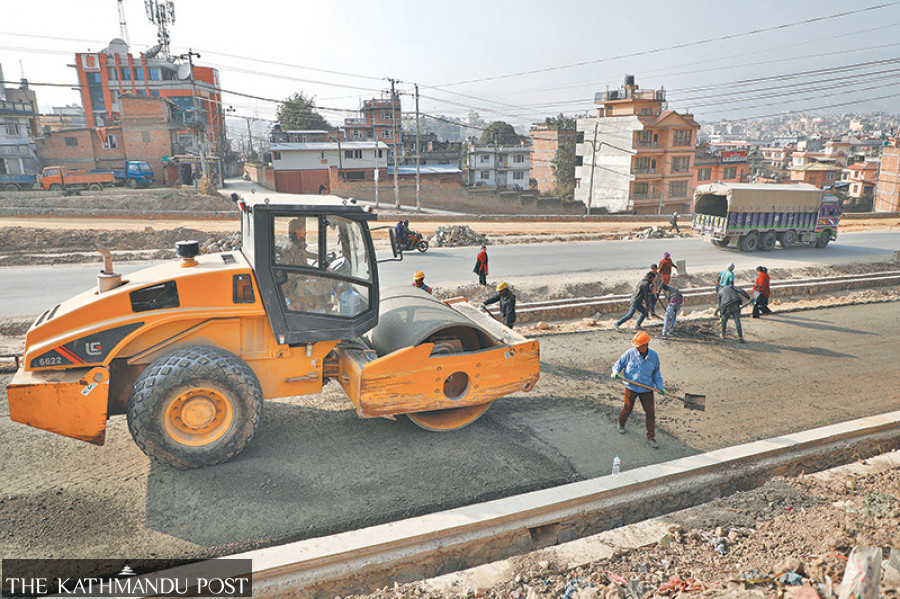Valley
Omicron scare likely to delay widening of Ring Road’s Kalanki-Maharajganj section
Nepali officials have yet to clear the ground for starting the work. Land dispute in Maharajgunj area remains unresolved.
Anup Ojha
The second phase of the Ring Road widening work involving the Kalanki-Maharajgunj section that remains disrupted due to the authorities’ failure to clear the physical and legal hurdles on the ground and the Covid-19 pandemic has become further uncertain in the wake of global fears over the Omicron variant of the coronavirus.
The widening of the 8.2km section is to be carried out by the Chinese government, and the work was initially planned to start from early 2020.
“It seems that the Chinese authorities are more concerned about the new variant, and we don’t see any possibility of them coming and resuming the work anytime soon,” said Arjun Jung Thapa, director general of the Department of Roads.
To prepare the ground for widening the road, the Kathmandu Ring Road Improvement Project under the Department of Roads had in August started cutting down over 2,000 trees along the Kalanki-Balaju-Maharajganj section drawing widespread criticism from environmentalists and urban planners.
Officials had great expectations of starting the road expansion drive after Chinese President Xi Jinping’s visit to Nepal in the second week of October 2019.
However, within five months, from March 24 last year, Nepal went into a nationwide lockdown, which shut down all sectors including infrastructure projects. Again the second wave of Covid-19 gripped the country, with prohibitory orders being reintroduced from April 29 this year.
Earlier, in the first week of October, Director General Thapa had hinted that the road widening work could start after the Tihar and Chhath (mid-November) festivals, but now he said the work could see further delays.
“Even Chinese workers who are working in Nepal are finding it hard to return home amid the Omicron scare, so I don’t think the Chinese government will send its workers for the road widening work anytime soon,” said Thapa.
“They may not start the work until the virus scare is over,” added Thapa.
Earlier in February, the road clearance work was disrupted after the government could not resolve the dispute concerning the roadside shrine at Swayambhu and acquire private plots along the road section at Maharajgunj. The land dispute has yet to be resolved. In July, the roads department blamed the Nepal Electricity Authority for not clearing the electricity power lines along the Swayambhu-Halchowk section after representatives of the Chinese contractor visited the site and said they cannot start the work until the electricity poles are removed.
Later the authority had claimed to have cleared all the electric poles. The road department in September had written to the Chinese government through the Ministry of Finance informing that they had cleared the ground for the work to start.
“Even the Chinese authorities had sent us a detailed project report for the road section seven months ago, but that was in Chinese language, so we asked for an English translation. We have yet to receive a translated version of the detailed project report,” said Thapa.
Information officer at the department, Shiva Prasad Nepal, said the appearance of the Omicron variant in India could further delay the work due to fears that the disease might cross over to Nepal.
Earlier, in January 2019, the Chinese government had handed over the 10.5 km eight-lane Koteshwar-Kalanki section of the Ring Road to the Nepal government. Work on the section had started in 2013 and completed in five years at the cost of Rs 5.13 billion. But by June 2019 since the handover, the section had seen 658 road accidents that killed 25 people in just ten months. The section was criticised as ‘killer road’ for it lacked basic roads infrastructures such as traffic lights, street lamps, designated parking, medians, designated U-turns and proper space for pedestrians and cyclists.




 17.12°C Kathmandu
17.12°C Kathmandu.jpg)









%20(1).jpg&w=300&height=200)

